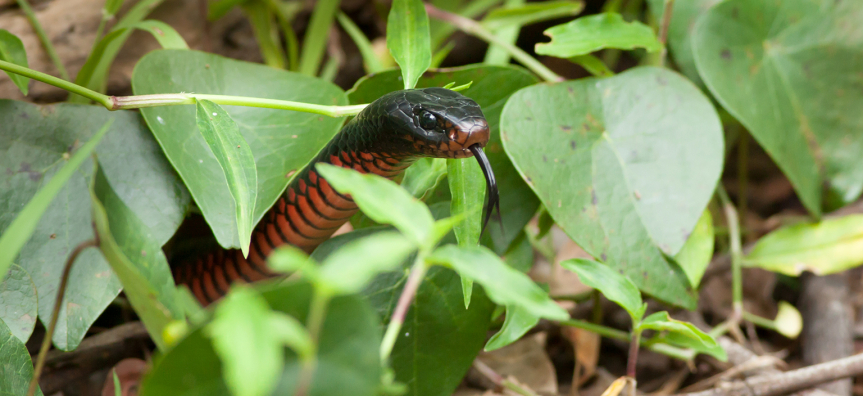
As temperatures drop, who doesn’t find themselves trying to keep warm and becoming less active? And across the Beaches snakes are no different.
But these slithering sliders are still present in our bushland and backyards, and it’s as important as ever that we remain vigilant to avoid the risk of injury.
Do snakes hibernate?
Snakes enter a state called brumation. It means they reduce their movement and metabolism but, unlike hibernating mammals, don't freeze or become completely unresponsive. And they still can bite!
Where do they go?
Snakes seek out shelter that is dry and secure, but they’re still out there. Ground-loving snakes like red-bellied blacks seek out fallen logs, abandoned burrows or main-made structures such as wood piles, metal sheets or sheds. Pythons and tree snakes prefer tree cavities, crawl spaces and roofs.
Do they move around?
Generally, they travel less. But because they need to regulate their body temperature, they will venture out to seek out warm spots on sunny days.
How do I avoid them?
In the great outdoors, make plenty of noise as you move through bushland and avoid lifting large rocks, logs or piles of debris.
And at home?
Keep lawns mowed, vegetation trimmed and remove anything that a snake might be tempted to make a home - piles of wood, old building materials or vegetation waste. Enclose chicken coops or other small animal hutches with fine mesh, and because snakes like water, keep water features away from your home.
What if I disturb one?
If you do spot a snake in the bush, it’s best to avoid and slowly walk away; most bites happen when people try to kill or capture them.
At home, a large python in your roof space might feel intimidating, but is harmless, and may even be a welcome possum or rat deterrent.
If you find a snake in your yard or home and would like it relocated, please call either:
- Sydney Wildlife Rescue on 9413 4300 (24/7)
- NSW WIRES on 1300 094 737
